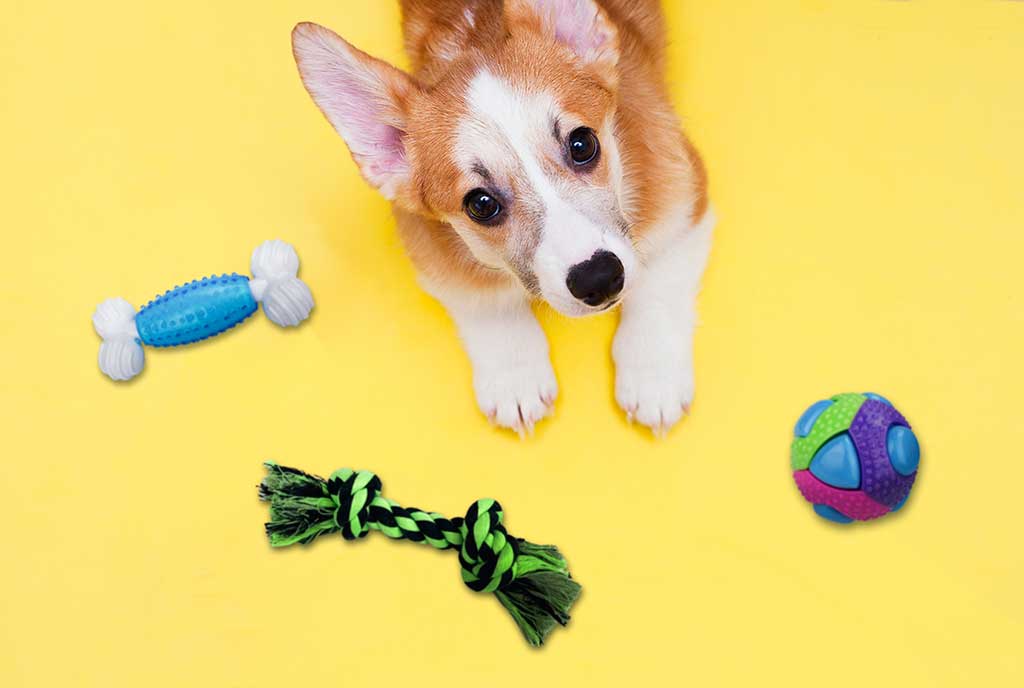A Guide to Choosing the Best Toys for Your Dog
February 17, 2022
All dog owners know that playtime is their furry friend’s favorite time of the day. Helping your dog stay physically active is key for maintaining overall happiness and well-being. Whether it’s a game of fetch or rolling around in grass, toys play an important part of your dog's well-being. Choosing a great dog toy requires several factors of consideration: how old is your dog? What is your dog’s personality like? Does your dog like to chew, or would they rather play fetch? No matter how your dog likes to play, we have the dog toys for you.
Think About Your Dog’s Age
Age is an important factor for choosing toys for dogs. For example, dog toys for a one-to-three-week-old puppy will be different from dog toys for senior pups. Several types of dog toys that are great for puppies might be those made of soft rubber, plush toys, and dog toys made of cuddly fabric.
Dogs aged three to nine months old may do well with dog chew toys that are both soft and soothing to help puppies while they’re teething.
Once puppies have grown out of the teething phase, their jaws should be strong enough to play with harder rubber toys, rope pull toys, and tennis balls. We suggest avoiding hollow ball toys, as they can easily be chewed through. Also feel free to introduce a variety of different textures and surfaces to help your pet get acclimated to new toys and keep them engaged.
As dogs age, you’ll be able to further challenge their mental capabilities. Think about this when choosing dog toys and consider going to puzzle toys, hide-and-seek toys, and burrow toys.
Consider Texture and Size of Dog Toys
Some dog toys are tough while others are plush and soft. Some dog toys have unique textures with nubs while others are completely smooth. Think about all of these factors and more when choosing your perfect dog toy. Knowing how your dog plays, chews, and how active they are is important as well when evaluating the texture and size of the right dog toy for your pet. Strong chewers and big dogs may tear super plush dog toys to shreds while small puppies with new teeth may not be able to handle tough rubber toys.
Size is another major factor to keep in mind when choosing the best dog toy for your pet. Medium and large dogs should stay away from extra small dog toys. All dog owners should refer to the manufacturer’s product label to see if there are any dog size recommendations. Also, be sure to remove any stray accessories on the toys such as ribbons, eyes, strings, pins that can be easily chewed or ingested.
Dog Toy Materials
There are several types of materials for dog toys, all of which meet different purposes. Three main types of materials for dog toys include:
● Latex or Rubber Dog Toys: Many dog ball toys are made of latex or rubber, making them fun to bounce and play with. Latex do toys can also be great for other types of dogs including figure and chew dog toys.
● Rope Dog Toys: From playing tug-of-war to playing fetch, rope toys for dogs can give your four-legged friend a wide array of benefits, such as strengthening the bond between pet owners and their dogs and redirecting overzealous behavior.
● Plush Toys: High-quality, well-made plush toys from reputable brands offer lots of fun for snuggles, cuddles, and everyday play. Puppies even enjoy plush toys to help during the teething phase. For more about the different types of dog toys and how to choose the best toy for your dog, be sure to check out the products available at Multipet today. Our pet toys come in different shapes and sizes, all with unique features that will keep your pup thoroughly engaged and entertained during playtime.
